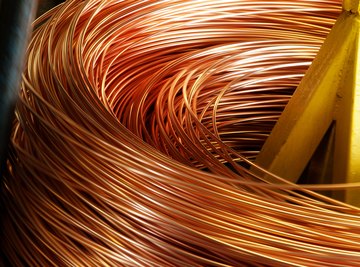
The periodic table of the elements is divided into nine groups of elements, based on a number of different characteristics. Among these groups are the transition metals and main group metals. Main group metals are actually a collection of alkali metals, alkaline earth metals and otherwise unclassified metals. All metals are good conductors of electricity and heat, though different groups have very noticeable differences.
Valence Electrons
Electrons orbit the nucleus of an atom in a number of shells. The number of shells occupied depends on the element. The specific electrons that atoms share to form bonds with other atoms are called valence electrons. Transition metals are the only group of elements whose valence electrons are found in more than one shell, or energy level. This allows for many oxidation states. Other groups of elements only have valence electrons in the outermost electron shell.
Bonds
Atoms can have two types of bonds: covalent and ionic. Covalent bonds occur when one or more pairs of electrons are shared between two atoms, while ionic bonds happen when one atom loses an electron to another atom. Transition metals tend to form covalent bonds more easily than main group metals because transition metals are more electronegative than main group metals. Main group metals form bonds that are electrically neutral, whereas transition metals tend to form bonds that have an excess of negative ions.
Reactivity
Some of the main group metals are the most reactive of all the elements in the periodic table. The alkali metals descend in reactivity from the top of the group, lithium, to the heavier end, including potassium. This is because their valence electrons are in the s orbital. The inner electrons cancel out much of the positive charge of the nucleus, which makes it easy for the valence electron to react with other elements. Transition metals hold onto their valence electrons better, making it more difficult for them to react with other elements. This is why lead, a transition metal, can be found unreacted in nature, while sodium, a main group metal, is almost always bonded with another element.
Physical Properties
Transition metals have the highest densities of any group on the periodic table, and their densities increase steadily and gradually. They have higher melting points than main group metals, according to the University of the West Indies. Transition metals have a higher charge-to-radius ratio than main group metals, and are the only metals known to produce paramagnetic compounds. Transition metals are used as catalysts in reactions more often than main group metals.
About the Author
A professional travel writer since April 2010, Doug Leenhouts has written for world66.com and slowtrav.com. He has a Bachelor of Science in management information systems from the Worcester Polytechnic Institute and three years of service in a consulting firm.
